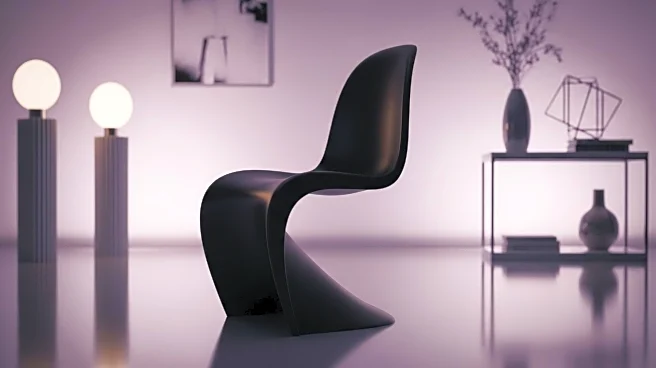What's Happening?
Christie's has successfully tested a new auction model with the 'Crafted and Collected: The Jonathan Burden Sale,' which took place online and in situ at Burden's Long Island City studio. The auction featured a 19th-century Incarnat Turquin marble dining table that sold for $101,600, significantly surpassing its initial estimate. This hybrid format allowed over 250 visitors to view the collection in person, while bidding occurred online from September 24 to October 8. The sale included 151 lots, ranging from 18th-century Anglo-Indian and Georgian furniture to modern pieces designed by Burden himself. The auction achieved a total of $1.07 million, with 97 percent of the lots sold, exceeding the presale low estimate of $487,500.
Why It's Important?
The success of Christie's new auction model highlights a potential shift in how auctions are conducted, combining the convenience of online bidding with the immersive experience of viewing items in situ. This approach could attract new buyers and increase engagement, as evidenced by the fact that over one-third of the buyers were new to Christie's. The model may set a precedent for future auctions, offering a more accessible and engaging experience for collectors and enthusiasts. It also demonstrates the adaptability of traditional auction houses in the digital age, potentially influencing industry standards and practices.
What's Next?
Christie's may continue to explore and refine this hybrid auction model, given its success in the Burden Design Sale. Future auctions could adopt similar formats, potentially expanding to other locations and collections. The positive reception suggests that more auction houses might consider integrating in situ viewing with online bidding to enhance buyer experience and reach. Christie's head of sale, Allison Cox, expressed hope for organizing more sales in this format, indicating a possible trend towards more innovative auction strategies.
Beyond the Headlines
This development could have broader implications for the art and antiques market, encouraging other auction houses to innovate and adapt to changing consumer preferences. The model may also influence how collectors interact with and purchase art, potentially increasing transparency and accessibility. Additionally, it could impact the logistics and costs associated with traditional auctions, as in situ viewing reduces the need for transporting items to separate exhibition spaces.












